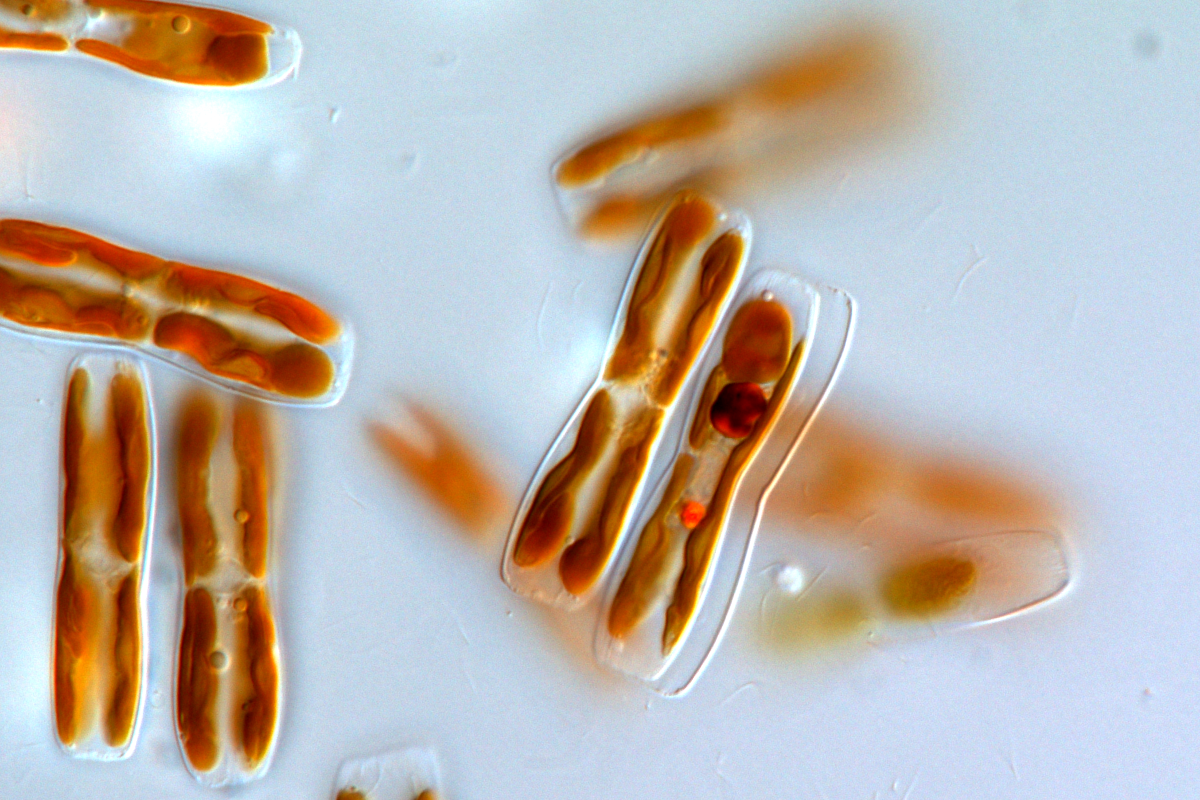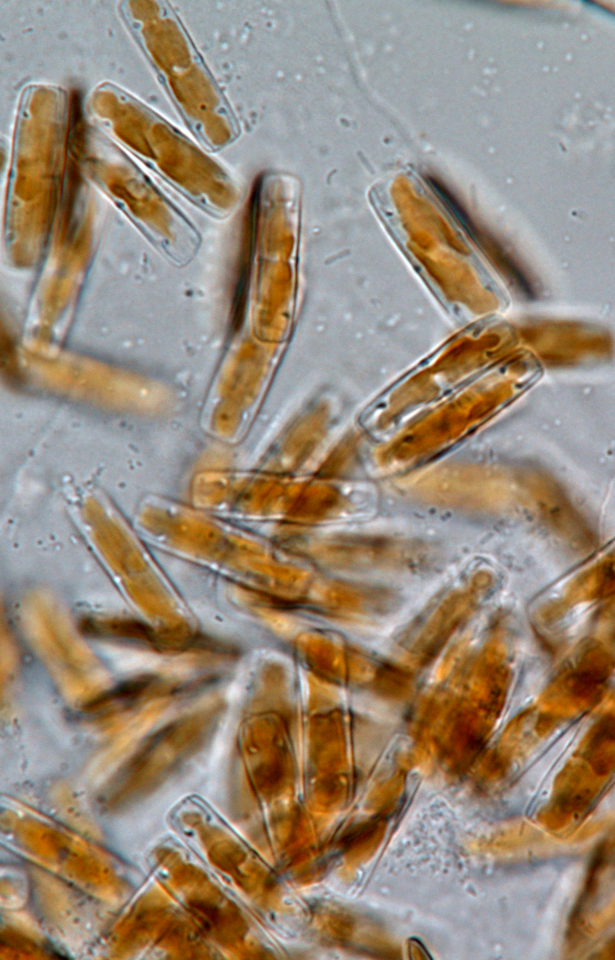Diatoms are one of the most successful, abundant, and species-rich groups of single-celled primary producers in the modern world
. They have been long studied for their ecological adaptations, structural complexity, and ability to generate elaborated, highly symmetrical and reproducible silica cell-walls under ambient conditions. As an important component of fossil fuels, diatoms constitute a potential sustainable and efficient source of biofuels that, contrary to the most of currently used biofuel crops, would not compete with food production
. Given their essential role in the biosphere alone, diatom evolutionary history merits closer attention. Diatoms are believed to have emerged about 200-225 million years ago from several endosymbiotic events that shaped their evolution and genetic make-up
. Due to a range of possible applications of both the diatom cell and its silicious skeleton properties, molecular characterization and sufficiently dense, high-quality sequencing data are essential not only for taxonomists and evolutionary biologists but also for researchers investigating, for example, diatom bioindication capacity, oil and bioactive compound production, or nanofabrication.
Diatoms employ sophisticated mechanisms to rapidly adapt to changing environmental conditions, and the structural diversity of diatom genomes indicates intriguing signalling pathways showing striking similarities to those observed in plants, animals, and prokaryotes. Several novel genes, including genes regulating cell death, C4 metabolism, and silica deposition in the cell-wall, as well as those governing iron acquisition, have already been identified from diatoms. It is expected that extreme conditions would induce further functional modifications to various genome regions, which may underlie the observed substantial differences among taxa studied to date. For example, multiple molecular features of Southern Ocean species were not found in diatoms isolated from other environments. It was proposed that horizontal gene transfer (HGT) might have provided diatoms inhabiting extreme environments with novel key functions that allow them to thrive in a variety of unusual habitats, thereby making an important contribution to the evolutionary success of the group.
As chemically-mediated interactions are essential for the establishment of balanced relationships among the various microbial components in epizoic biofilms, the production of, for example, antimicrobial compounds could be used as one of the defence mechanisms allowing biofilm-forming diatoms to be competitive on the potentially extremely crowded hard surface habitat provided by the host organism whose availability is highly limited in the marine ecosystem. Such diatom species constitute an excellent potential source of both novel bioactive compounds and compositionally and structurally intriguing genomes, including mitochondrial genomes that are rarely assembled in studies focused on protists and merit more thorough investigation.
This study aims to assemble whole genomes of dozens of diatom species belonging to three ecological groups (non-epizoic, opportunistically epizoic, and obligately epizoic) and identify potential genetic patterns linked to the diatom lifestyle and habitat. It is our response to recent calls for exploration of a broader range of microbial in general, and diatom in particular, genomes, and further analysis of the barcoding potential of various diatom genes.
Collaborators: Dr Marianne Pretorius, co-PI (North-West University, Potchefstroom, South Africa), Dr Arshad Ismail (National Institute for Communicable Diseases, Johannesburg, South Africa), Prof. Ntanganedzeni Olivia Mapholi (University of South Africa, Pretoria, South Africa)
On the left, Tursiocola yinyangii in monospecific diatom culture. Right, Poulinea lepidochelicola in monospecific diatom culture. Upper left, Craspedostauros danayanus in monospecific diatom culture.
One of the first epizoic diatoms sequenced will be Craspedostauros danayanus, the winner of the 2021 Inqaba's Africa Genome Challenge. Watch the following video to learn more about this peculiar diatom species
Many thanks to Sleeping at Last for allowing me to use one of his inspiring compositions in the winning diatom video 


![]()